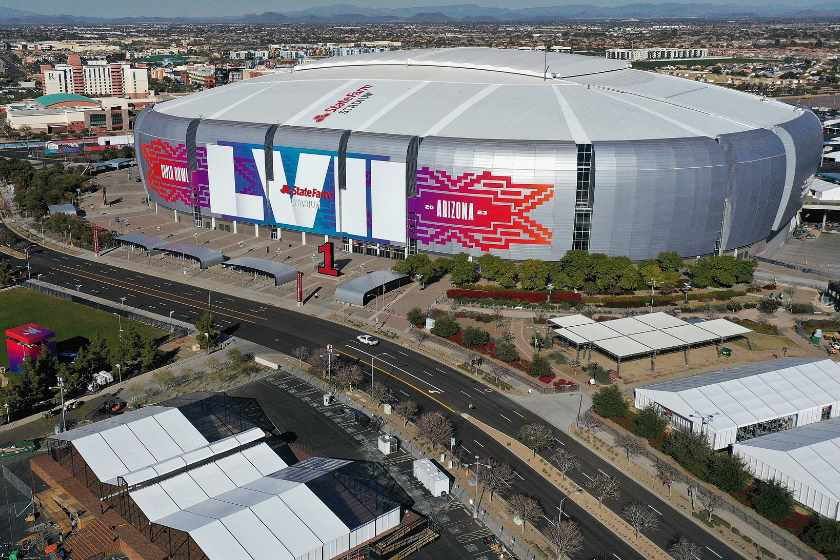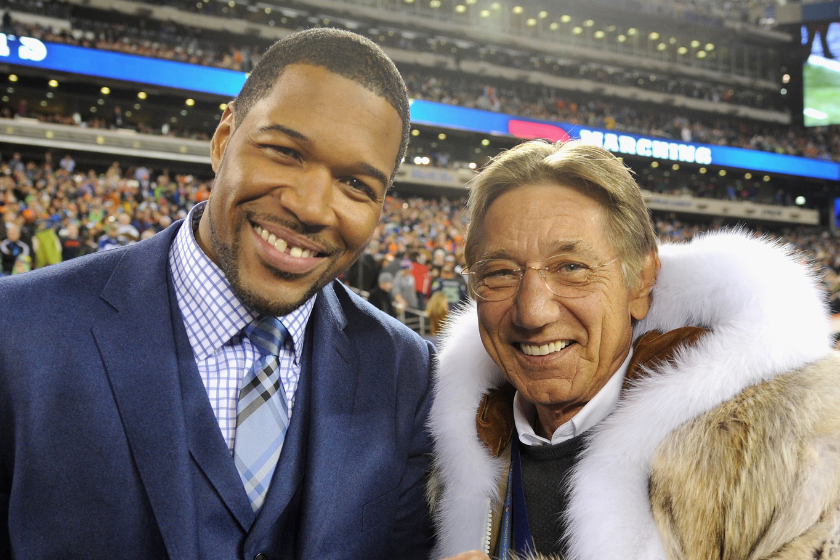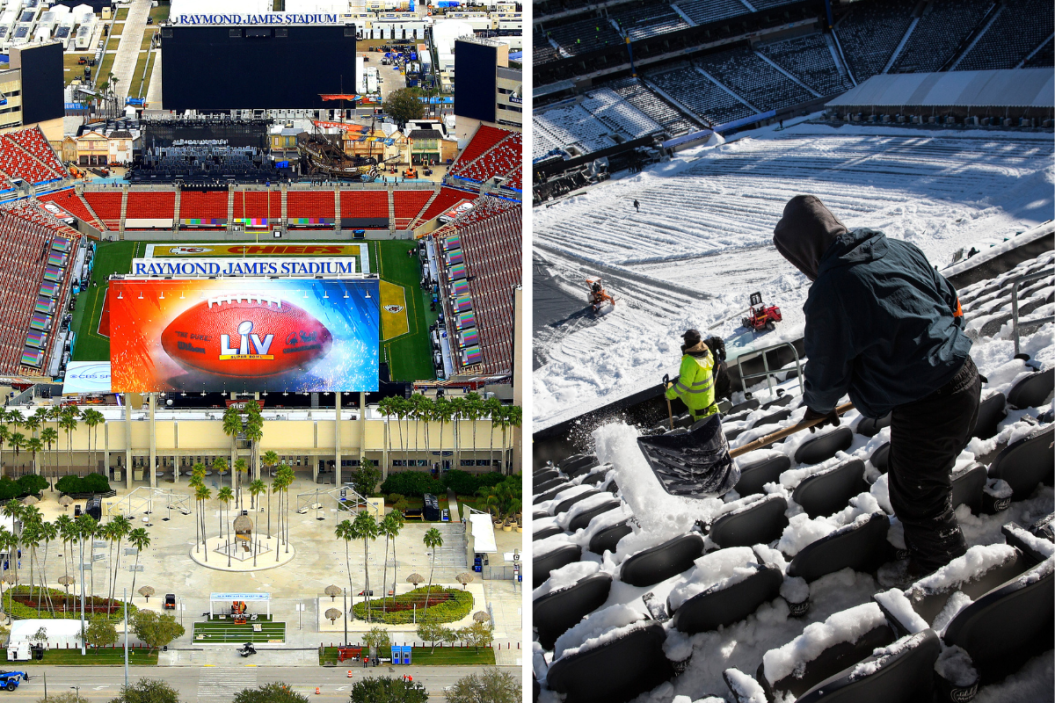The Super Bowl is the most fascinating event in America. After millions of people around America watch football over the course of the 18-week season, millions more come back to sit around the television for one final Sunday night viewing. It is the most expensive event to attend — even the cheapest ticket costs thousands. The game can and will define the legacies of certain players, teams and coaches. With so much at stake, you might think the NFL would want to make the game feel as if it's in its truest form — outside, in the cold and snow of February.
This is practically never the case, though. The NFL has consistently held the big game indoors, and the league has had a bias toward certain cities. Why is this? The answer isn't entirely obvious. One could make the case that the NFL would be smart to spread the wealth and put the game in a mix of cities to promote growth. While fair is fun, the league is a business, and a business is out to make money.
Warm Weather Super Bowls Brings More Fans

Photo by Christian Petersen/Getty Images
RELATED: Chris Stapleton Announced as Super Bowl LVII National Anthem Singer
For the league, warm-weather cities that can attract tourism and attention will always win out over colder and certainly smaller cities.
The league loves places such as Miami, New Orleans, Tampa and Phoenix. These locations provide a warm-weather climate in the winter month of February. This means consumers in and around the game will be willing to spend money to come to the area and spend on items and services that will support the NFL's bottom line.
Just looking back at the most recent Super Bowl in Los Angeles, the City of Angels earned a lot of financial compensation. According to the economic impact report, the county anticipated gaining between $234.3 million and $477.5 million before the game.
Though any town hosting could expect a payday, cities like Los Angeles offer more than places like Green Bay. There are plenty of options for hotels, dining, entertainment and organizations that can set up events. Add in a heavy local population, large state population and the fact that the place is a massive tourist hub, and Los Angeles makes a great host city. This blueprint of ancillary events can be seen in other common Super Bowl cities, even those that are not as large.
The Super Bowl's Favorite Temporary Homes

Photo from the Bettmann Archives via Getty Images
The city of New Orleans has hosted the Super Bowl 10 times. The most recent occurrence came in 2013, when the Baltimore Ravens defeated the San Francisco 49ers 34-31. In just a couple of years, Louisiana's biggest city will again get the championship game, set to kick off on Feb. 9, 2025.
Although it's a medium-size city in a poorer state, Louisiana's New Orleans provides loads of entertainment for visitors. Walking around the famous segments of the city such as the French Quarter gives tourists a lot of dining and nightlife options. The city also includes many hotel accommodations, which make it easier for the league to pour in the people.
Regardless of the stadium, it seems obvious that the NFL will enjoy coming back to places such as Miami, New Orleans and Phoenix. Unusual host cities must then provide something unique and fascinating. That unique and fascinating thing often comes in the form of a new, state-of-the-art stadium that demands a visit.
Cities that have provided a new stadium have been awarded swiftly. Atlanta opened Mercedes-Benz Stadium in 2017 and hosted Super Bowl 53, featuring New England and Los Angeles, a year and a half later.
The year prior, Minneapolis was given the opportunity to host the game as the city had just opened the innovative US Bank Stadium. Although it snowed in the city the week of the Super Bowl, fans were able to enjoy the game in a room-temperature building, and the NFL was pleased to show to the world and the country how nice its stadiums are. Without a team or a stadium, Las Vegas was previously unable to host. Now housing the Raiders inside of a brand new Allegiant Stadium, Sin City will host the game in 2024.
The New Jersey Experiment Leads to Confirmed Hypothesis

Photo by Kevin Mazur/WireImage
Previous experiments will not help other cities that are trying to finally stand out to the league and host the big game. The last Super Bowl to be held at a relatively normal stadium and in a cold-weather city came in 2014 with Super Bowl 48. The game was held in East Rutherford, New Jersey, and kickoff temperatures were in the 40s. Surely, the weather wasn't terrible for the area at that time of year and might not have truly impacted the game's outcome, in which the Seattle Seahawks demolished the Denver Broncos 43-8. Still, site selectors will remember that the last time the game was played in cold weather, it ended in a blowout.
With plenty of lucrative factors drawing the NFL to other cities, it becomes no mystery as to why the league stays away from certain destinations. Places such as Seattle, Green Bay or Charlotte don't offer as much as the biggest cities in terms of tourism. These cities also don't have an indoor stadium or the same capacity to host an influx of people.
At the end of the day, the NFL is a business. And if you're a city that can't help the NFL make the most money, you can forget about hosting the Super Bowl.

